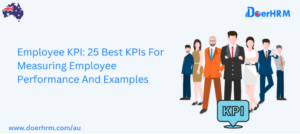Significance of KPI Reports for Your Business
In any workplace, there are skill and performance differences that exist. The need for certain jobs, technology, and even certain skills will change over time. When something like this occurs, it is essential to maintain the level of results and productivity within your team by identifying performance gaps and trying to address those gaps.
The majority of the time, differences in performance are a direct consequence of lacking abilities among members of your team. This may manifest itself as a lack of growth for team members or as members of the team going missing.
The best approach for the short term is to use direct intervention to bridge these gaps through training and hiring. However, the long-term goals should involve using competency models and frameworks to account for skills gaps before they occur. This will ensure that employees are hired, developed, or directly trained to prevent them from occurring.
Determine the Areas of Poor Performance Correctly
One of the most important aspects of correcting performance gaps is accurately identifying both the gaps themselves and the source of the gaps. Discrepancies in performance may have many causes, but the following are some of the most common:
- A lack of familiarity with the task
- A lack of understanding of the role
- Ineffective management
- Conditions, whether they be physical or mental, at the place of employment
- Issues with leadership as well as structural problems
Depending on the resources you already have and your capacity to accurately evaluate your business, it may be necessary to bring in an outside party in order to conduct an accurate performance gap analysis.
It is also a good idea to utilise several data sources, such as key performance indicators (KPIs), employee evaluations, and leadership assessments, so that the findings may be cross-validated.
Employees Should Be Trained in New Hard Skills
Employees who were formerly highly successful at their jobs may find that they are unable to apply their relevant talents due to changes in technology. This often leads to a performance gap in the workplace.
By using competence frameworks and detailed job profiles, you will be able to determine which skills are essential for the position. This will allow you to provide training and development opportunities to those who need certain abilities in order to execute their jobs.
Develop Your Leaders to Fill Performance Gaps With Leadership Development
Problems with leadership and management are often a direct source of performance disparities. This is particularly true when strong performers are promoted from a technical function to a leadership post in an organisation.
Some top performers are able to successfully make the transition, while many others may continue to perform in technical jobs, micromanaging teams and doing tasks on their own rather than empowering their team. This will lead to a significant drop in motivation as well as a significant disparity in performance.
This may be avoided by including leadership development so that both management and leaders are aware of what is expected of them and how they should carry out their responsibilities in their respective jobs.
Take Into Account the Culture and Environment of the Workplace
Difficulties in the workplace and the culture of the workplace can have a significant impact on performance and productivity. These problems might come from a lack of emotional intelligence, poor communication, or even the physical architecture of the office.
These problems can be identified through assessments, and they typically need to be fixed by taking direct action on specific instances (such as offering workshops on communication and teamwork), providing training in emotional intelligence, or developing workplace solutions that are more flexible and agile.
Include a Competency Framework in Your Strategy
By laying the groundwork to evaluate and track the productivity of individuals in their roles, a strong competence framework will make it easier for you to identify and rectify performance gaps in a more timely manner. Competency frameworks recognise what good performance looks like (rather than simply skills), which can help you review when performance is being affected and how it is being affected, allowing you to take steps to correct issues on an individual level. Competency frameworks are an alternative to skill-based frameworks.
Gaps in performance are a huge issue that plagues many teams, but the causes of these gaps are often leadership issues, direct talent deficiencies, or a lack of desire. Implementing effective HR tools can assist you in evaluating and resolving these issues in a more timely manner while also avoiding similar issues in the future.









